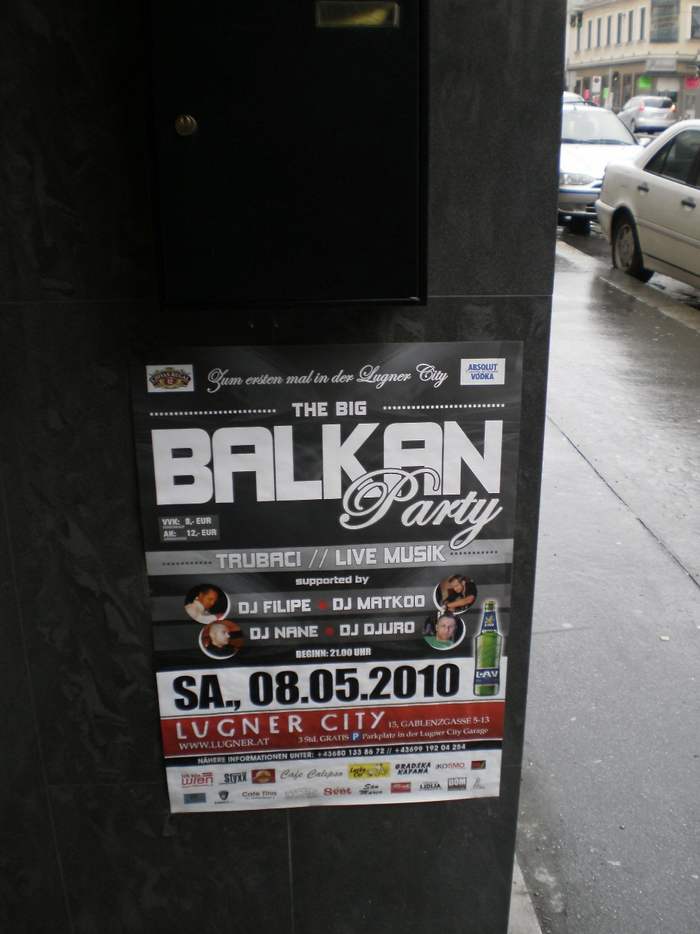Methodology
This study follows up on my past research into the intersection of migration and the popular culture of people from the former Yugoslavia (Daniel 2007). Between 2007 and 2011, I made several research trips to Vienna and Graz and rounded out those efforts with online investigations. This culminated in my doctoral dissertation that analyzed socioeconomic divisions among music listeners who were migrants from the former Yugoslavia (Daniel 2013). Although my research subsequently turned to other topics, I never completely abandoned this earlier interest and over the years I have returned to Vienna quite often. Until 2013, I travelled there from nearby Brno in the Czech Republic. Later I set out from Prague, the slightly more distant Czech capital. During these occasional, mostly work-related visits, I maintained the ties I had established in Vienna and met up with residents who had journeyed there from the opposite direction.
Exploring Vienna as a Balkan soundscape also allows for the blending of different sensory inputs. In Vienna, references to Balkan music are almost always accompanied by images, whether these are the publicly posted flyers, posters, and other visual advertising for upcoming sound events or the music videos shot on city streets. In my past research into the Viennese Balkan soundscape, I therefore broadened the definition of “Balkan” sounds beyond its traditional associations with the squeal of the zurla and booming rhythms of ethnic music: this was also a search for the visual signs of Balkan sounds. By adding this visual component, I could circumvent certain obstacles around sounds that were difficult to connect to the Balkan space, and thus inaccessible to analysis. (This includes, for example, sounds that were lost due to the subaltern position of their emitters.) While I am not an insider of the groups in this study and only have a limited knowledge and understanding of different South Slavic languages, my initial work relied on the ethnographic method of direct observation. These explorations of the physical city used practices based on those of the flâneur (Benjamin 2009) and variations on the Situationist dérive strategy (Debord 1958).
The current study, in contrast, coincided with a series of lockdowns in Europe between 2020 and 2021 driven by the Covid-19 pandemic. Among other things, this complicated the project of soundwalking through Vienna in search of signals, soundmarks, sound objects, and sound events of the former Yugoslavia. Despite dwelling in Vienna physically between October 2021 and February 2022, it was thus necessary to mostly rely on cyber-ethnography and netnography methods. As a result, I focused on objects that remained audible and visible online as the extensive live concerts and varieties of musical culture that usually characterize the city were put on hold. Of course, creating a complete sonic portrait of Balkan Vienna would require attention to a spectrum of sounds beyond music. These would include speech in different languages and at different pitches, the noise of Balkan cafés and fast-food restaurants. These sound objects, however, are beyond the remit of the current study. Instead, my concern is explicitly with the music of Balkan Vienna and the impact of the age and class of its makers and consumers.

